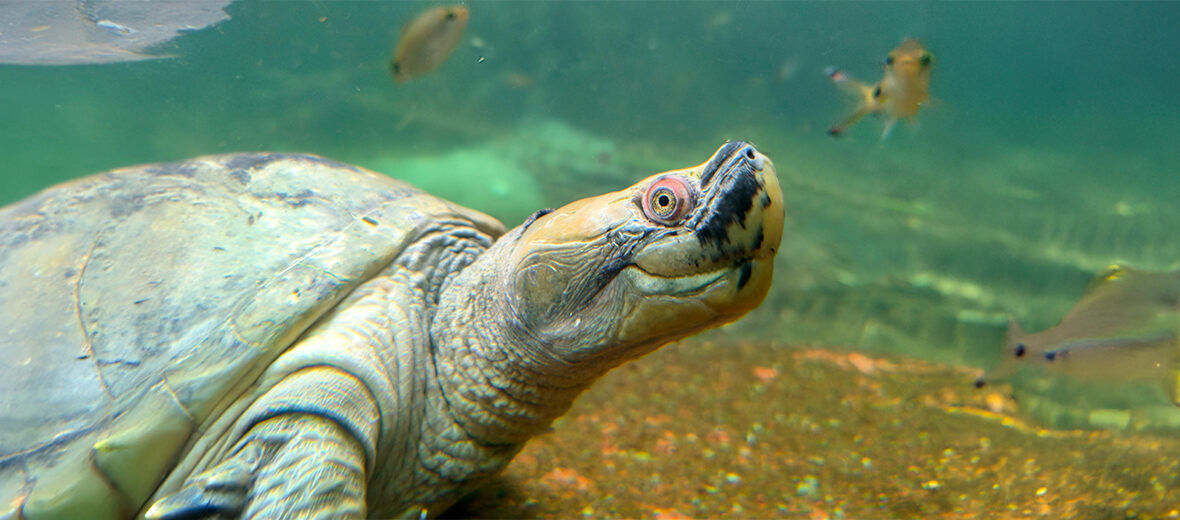
Welcome in 1 of the world’s most endangered turtles, the Burmese roofed turtle, which appears to be constantly smiling. They are freshwater turtles that are endemic to the rivers of Myanmar. Once abundant throughout their range these terrapins suffered a rapid decline to the point that they were once considered extinct. It wasn’t until 2 subpopulations were rediscovered in 2001 in the Chindwin and Dokhtawady rivers. However, by 2018, less than 10 mature individuals were documented. They face the threats of habitat loss and destruction at the hands of the lumber industry, marine and freshwater aquaculture, mining, quarrying, renewable energy – in the form of dam construction; shipping lanes, that can result in disturbance and vehicle strike – being hit by vehicles; overcollection of the turtles and their eggs; pollution, both water and soil; and climate change, that can cause flooding and droughts. The IUCN lists these turtles as Critically Endangered. Their populations also continue to decrease.
First the Stats…
Scientific name: Batagur trivittata
Weight: Up to 63.71 lbs.
Length: Up to 22.83 inches
Lifespan: Up to 80+ years
Now on to the Facts!
1.) There are 6 known species in the genus Batagur of the family Geoemydidae.
2.) In 2007, an illegally traded Burmese roofed turtle was discovered at Qingping market in Guangzhou, China, demonstrating the ongoing threats of wildlife trafficking.
3.) These turtles are sexually dimorphic in that females are substantially larger than males and the male’s and female’s colorations vary greatly.
4.) They are herbivores (eat plant matter) that feed almost exclusively on aquatic and semi-aquatic vegetation.
5.) In captive breeding programs, they are fed water spinach, fish food pellets, figs when in season, and other foods are supplemented as needed.
But wait, there’s more on the Burmese roofed turtle!
6.) Another obstacle these turtles have to fight against with regards to repopulation of their species is that females don’t become sexually mature until 14 – 20 years of age.
7.) Females lay up to 25 eggs each season that hatch in up to 75 days.
Did you know…?
Because these critters are a dispersive species (relocate quickly), reintroduction efforts are more challenging since they will start to migrate downstream for miles almost as soon as they’re released.
8.) These turtles are nationally protected and listed in CITES Appendix II.
9.) Captive populations are kept in 5 zoos and comprise about 1,000 individuals as of 2018.
10.) Health screenings of these turtles were carried out in 2014 and 2018 to prevent the transmission of pathogens to wild populations upon their release. These health screenings revealed no signs of disease or physical illness, which confirmed that the turtles were in superb health.
But wait, there’s still more on the Burmese roofed turtle!
11.) 2 groups of 30 genetically diverse individuals were reintroduced into the wild at 2 different locations along the Chindwin River.
12.) Burmese roofed turtles are diurnal (active during the day).
Now a Short Burmese Roofed Turtle Video!
Be sure to share & comment below! Also, check out the Critter Science YouTube channel. Videos added regularly!
Want to suggest a critter for me to write about? Let me know here.
Some source material acquired from: Wikipedia & IUCN
Photo credit: LeMandai Enthusiast




